Correction: Aida Audeh gave her husband’s DVD collection to Professor Pelster-Wiebe when she left the University. The Inferno Art Collective’s name was inspired by her long-term research as an art historian of Dante’s Inferno.
Tiki lamps and fire pits illuminated the backyard of the Creative Writing Program’s House, set up in anticipation of Snowball, the Inferno Art Collective’s first event of the semester. On Feb. 2 directly behind the brick house, plywood boards were set up across the ground holding a drum kit, amps and a mic stand with a bunny stuffed animal hanging from it. This makeshift stage is a testament to the “do-it-yourself” nature of the event.
“We just kind of had this hare-brained idea of, ‘Oh, wouldn’t it be cool if, in the middle of winter, we put some fire out in the backyard and got people to read some poems and play some music?’ And then everyone on the Inferno was like, ‘Yeah that sounds great, let’s do it,’” Creative Writing Program Director Richard Pelster-Wiebe said.
Pelster-Wiebe started the Inferno Art Collective in the spring of 2022, inspired by former Hamline Professor of Art History Aida Audeh, who left Pelster-Wiebe a collection of CDs with pictorial representations of Dante’s Inferno.
The night started with a set from MAGICK FLAVOUR STATION, the solo project of musician Raymond Kostelecky, a self-described “Vapor Folk” musician. Kostelecky wore distinctive makeup, their face painted white with black and red eyeliner and a black cross smudged on their forehead. Their guitar strings were left long and protruding from the end of the instrument.
“I just try to make music that makes me feel better when I’m making it. It’s about mental health struggles so I hope people who listen to it that have similar issues can relate.” Kosteclecky said.
Kostelecky’s set included music from their recorded songs, including “Aunt is Stalker,” written about their Aunt stalking their social media, while a video of social media posts and cartoons was projected on the brick wall behind them. Kostelecky is not a Hamline student but heard about the event through a friend who is a part of the collective.
“I think having a space where other people can use art as an outlet, whether it be for mental health or just other stuff, I think that’s amazing,” Kostelecky said.
After MAGICK FLAVOUR STATION’s set, there was an open mic. Students were encouraged to share poetry. First years Kasimir Austin and Finnley Abbott shared a poem that Austin wrote in a high school creative writing class with a friend.
“Kaz asked me if I wanted to perform this with him, and after I read it for the first time I was like there’s no way I can’t perform this with you,” Abbott said.
Austin explained that the poem was written in 2022, but was refreshed with data from 2023 for the event.
“We were both transgender, and it was just a moment in time that we were passionate about activism,” Austin said. “He came up with the idea of using statistics to get the point across. It was just something we sat down and wrote together. It took quite a lot of research.”
Another poem was shared by sophomore Hanan Abdi. Abdi is an English and Communication Studies major and was encouraged by her creative writing professor to come to the event and share poetry. Her poem “The flags plan” is told from the point of view of the Somali flag.
“I usually don’t find events that are like open mic based where students can just participate like this, so I am definitely looking for more like this,” Abdi said.
Mouthful Music stepped up to the mic next. The band has four members and was started this past September. Senior at the University of Minnesota Irene Bastounes, the lead singer and songwriter, describes the band as being inspired by Big Thief, Snail Mail and Haley Heynderickx.
The band had an infectious stage presence. Before playing, they placed a Pokemon character on the bassist’s amp. Midway through the band’s third song, the crowd cheered them on as a member began playing the harmonica.
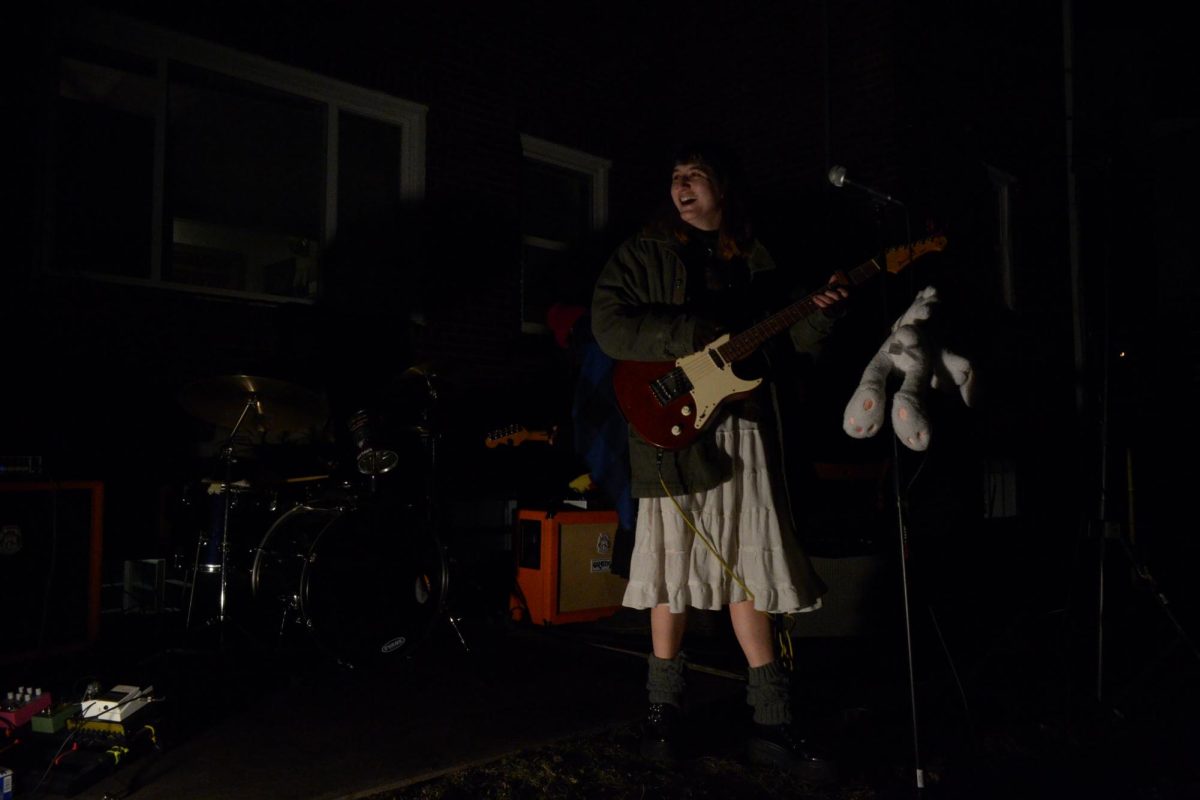
“The whole community aspect of let’s just get together and do music and art is kind of exactly what we are trying to do with music and art and stuff,” Bastounes said, “Music can be gate-kept, to have the opportunity to have music free to any person is very important, and is a big reason for why we make music.”After Mouthful Music’s set, the mic opened to more poetry reading. The poems were about family, growing up and love. Many of the poems were read by first-time performers.
At this point, Pelster-Wiebe stepped in to introduce the final band, Speed Limit 5, and explain that the event had to end at 8 p.m. due to the city’s noise ordinance.
As the band began playing the last set of the night, they invited the remaining crowd to get close and move. “We recommend you wear earplugs,” they said.
The five-member band’s shadows were larger than life, projected on the brick building as they entered their set with a loud screech-like sound. The crowd jumped and nodded heads to the music. After their set, Pelster-Wiebe encouraged students to ask members of the Inferno Art Collective about future events.
“The Inferno is an idea. An idea of community, an idea of community that can happen anywhere on campus. That could be anything,” Pelster-Wiebe said. “It speaks to the core of the idea of the Inferno Art Collective: that it is welcoming of all students and again, just to emphasize, it’s for students who are seeking a creative outlet even if they are not artists themselves.”


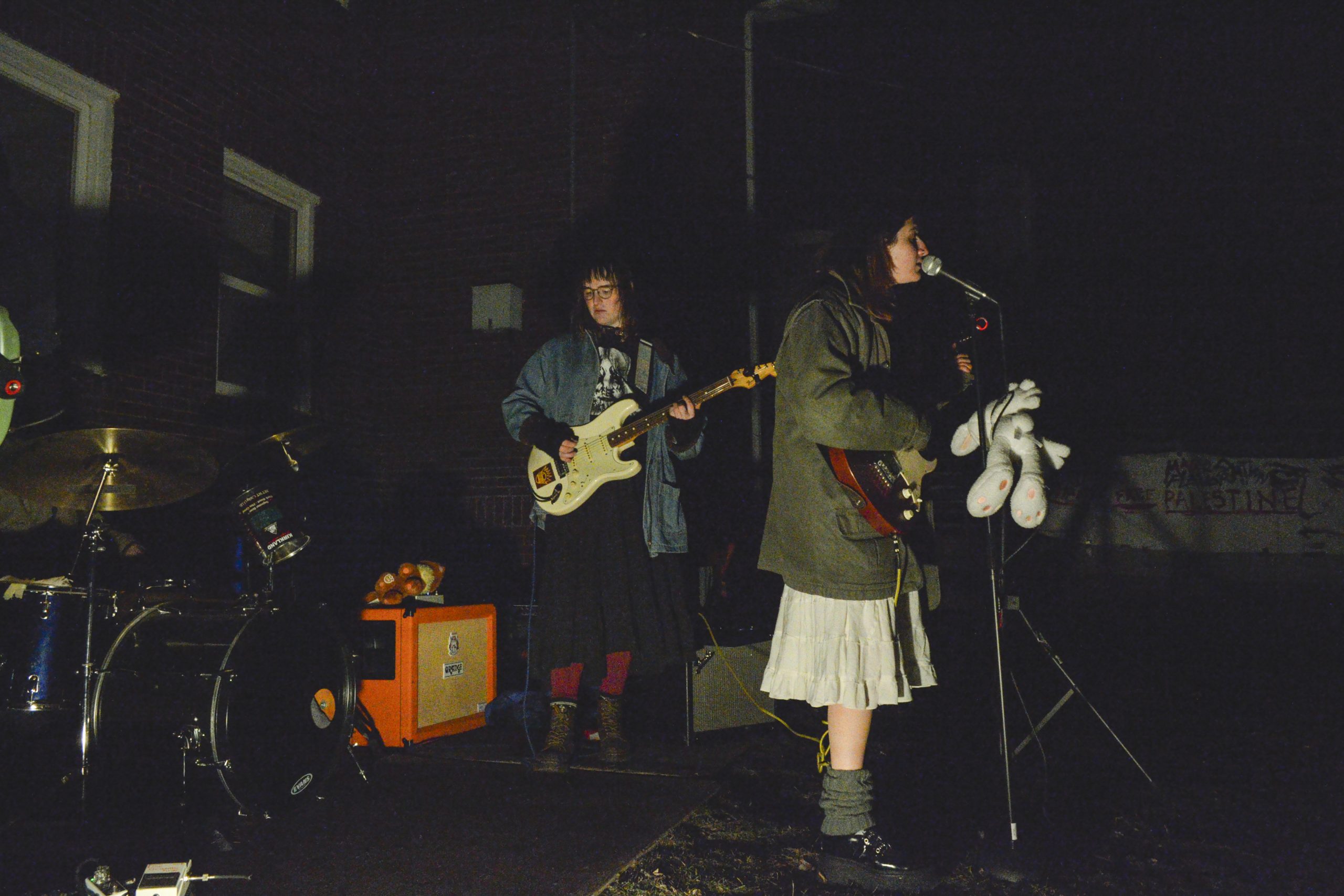
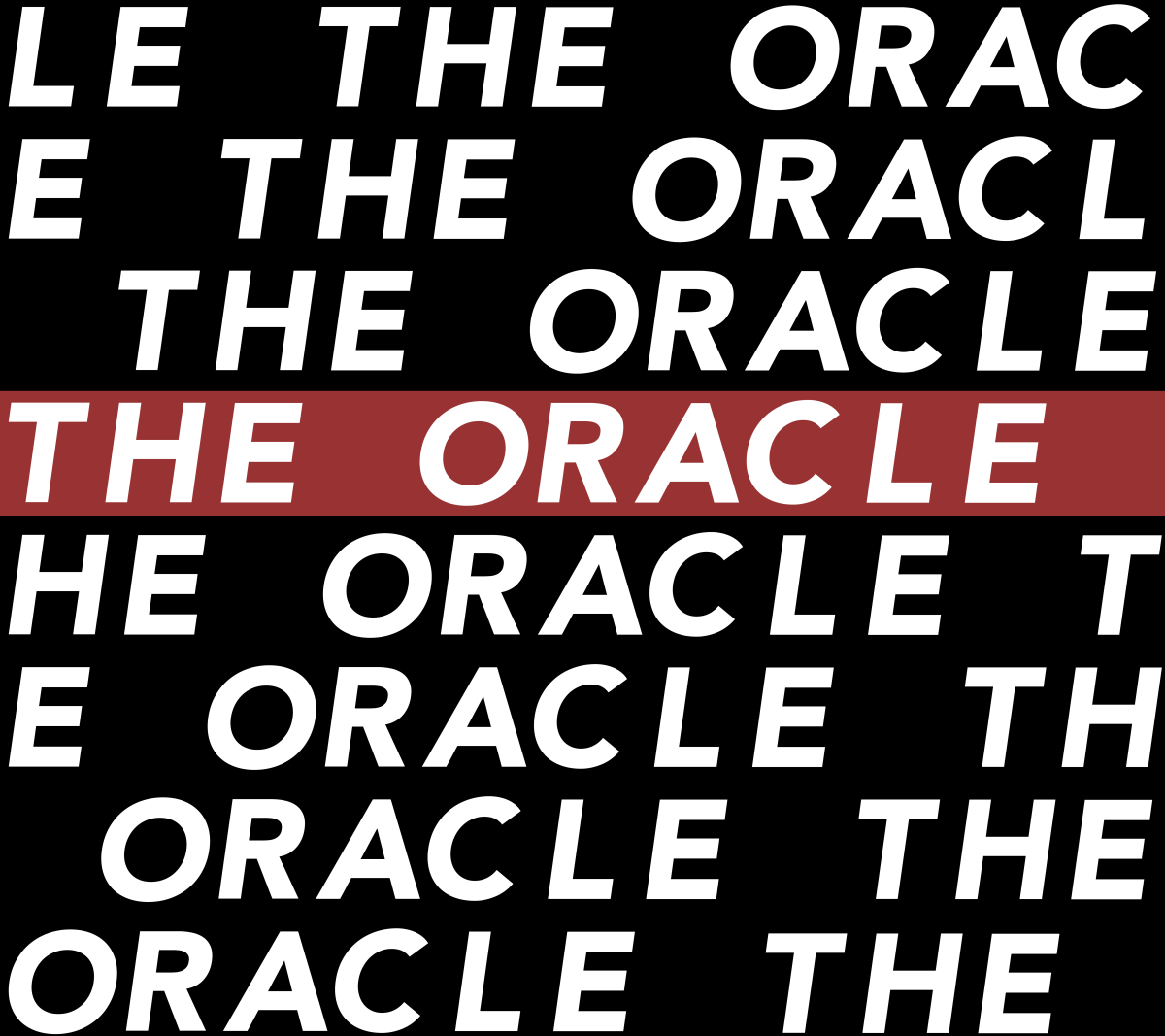

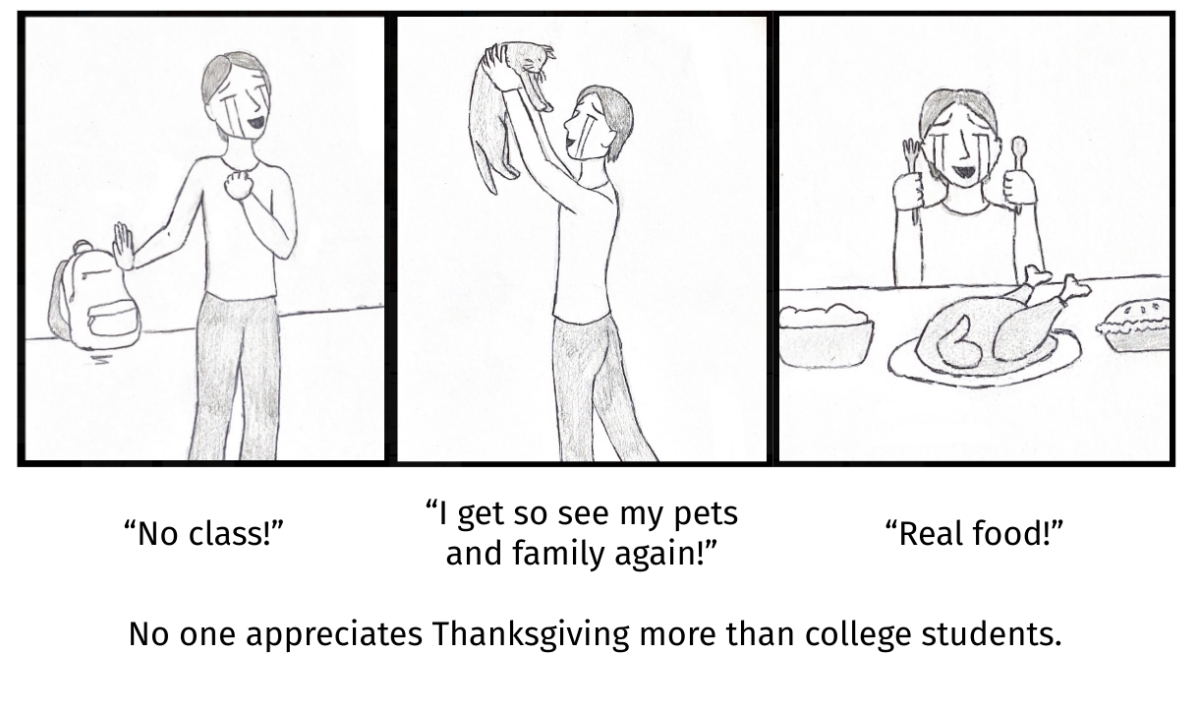

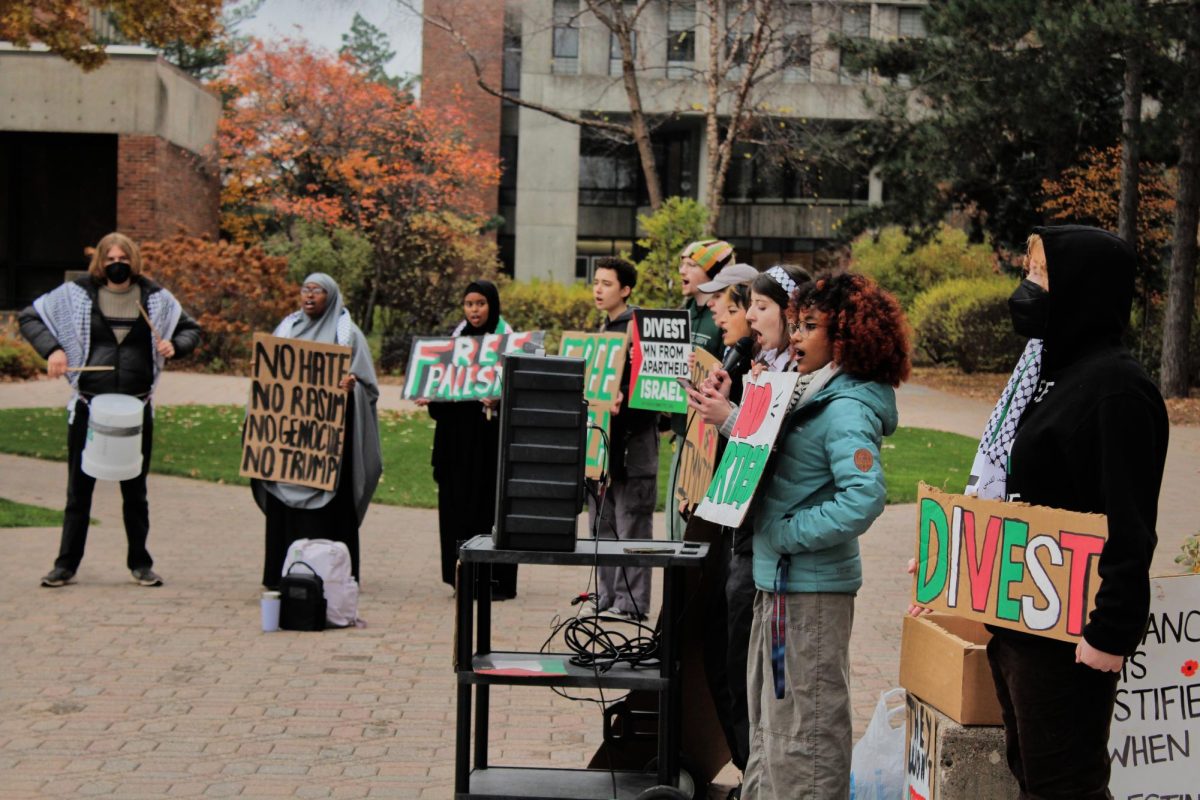

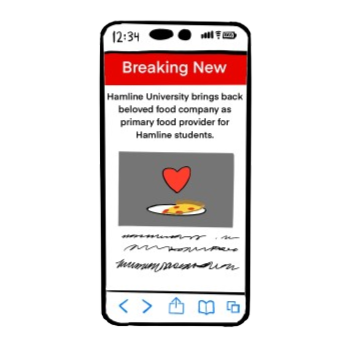
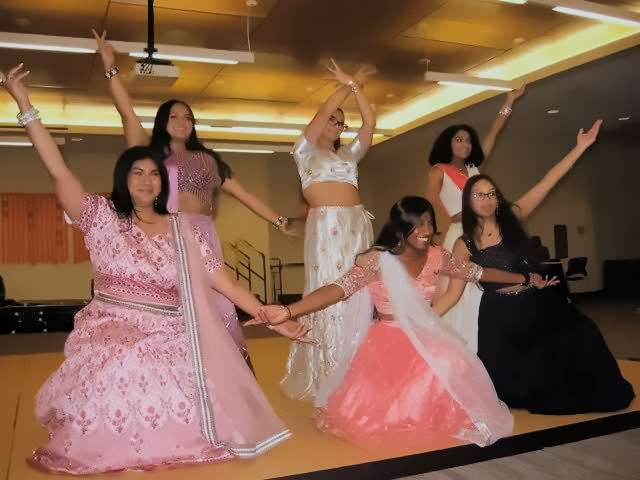


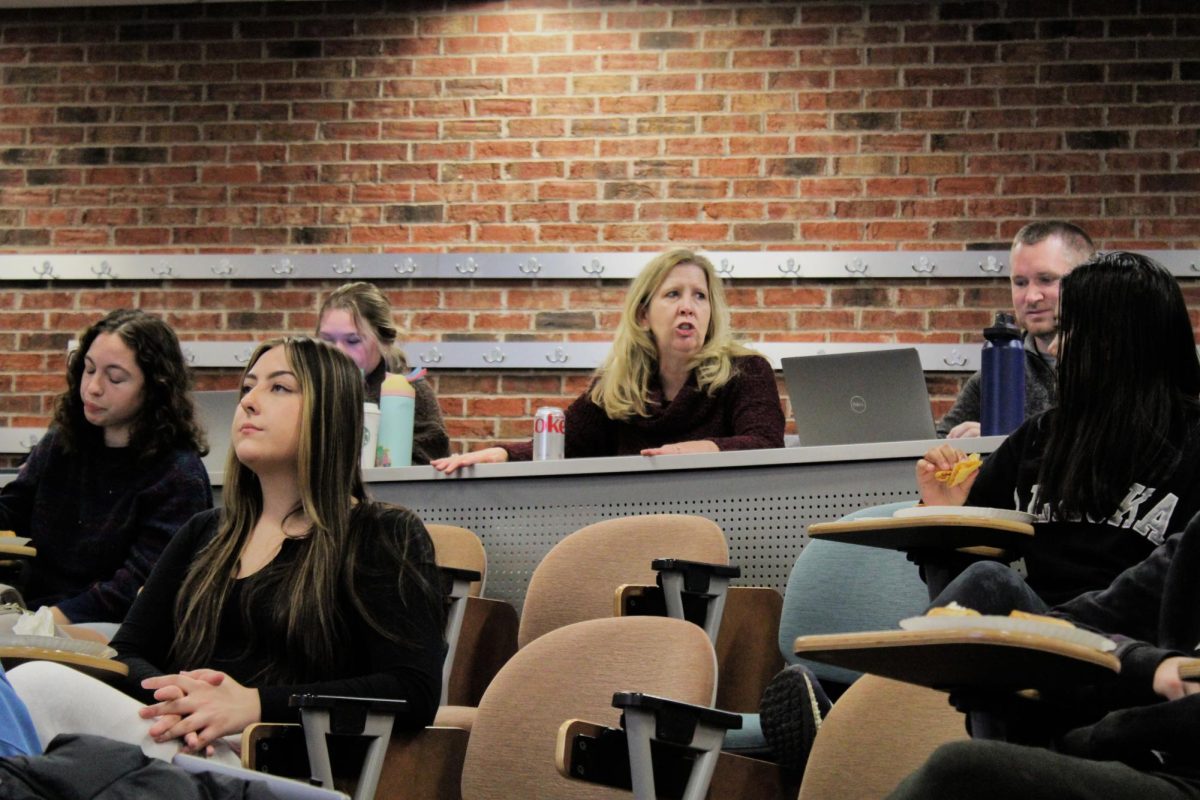
Aida Audeh • Feb 10, 2024 at 12:14 pm
Thank you for your article about the Inferno Art Collective and HU’s Creative Writing program. I am so glad to see it thriving! I noted a slight mis-statement in your description of how the Inferno Art Collective in the Creative Writing House came about, however, and would like to fill in some of the details. I decided to retire early from teaching Art History at Hamline (I was at HU approximately 20 years, since September 2002) when the Expedited Program Review process spearheaded by Dean Kostihova decided to eliminate the Art History major and minor from Hamline’s offerings. At that time I started giving away many possessions, including my and my husband’s extensive collection of DVDs. My husband is a real film buff and had many rare and interesting films in his collection. We were moving out of Minnesota and could not take it all with us, so decided it would be wonderful to give most of them to Prof. Richard Pelster-Wiebe who is very engaged with film studies through his work in the Creative Writing program and Digital Media Arts (that used to be an individual department, not yet fused with Studio Arts – as Studio Arts used to be the Dept of Studio Arts and Art History). The name “Inferno” indeed references my long-time research work as an art historian on visual representations in 19th c. French art of Dante’s great Italian medieval poem The Divine Comedy (comprising 3 volumes: Inferno, Purgatorio, and Paradiso). The DVDs we gave to Prof. P-W did not concern Dante, however.
Sincerely,
Aida Audeh, JD, PhD
Professor Emeritus of Art History
Formerly of Minnesota, now happily enjoying the Florida sunshine